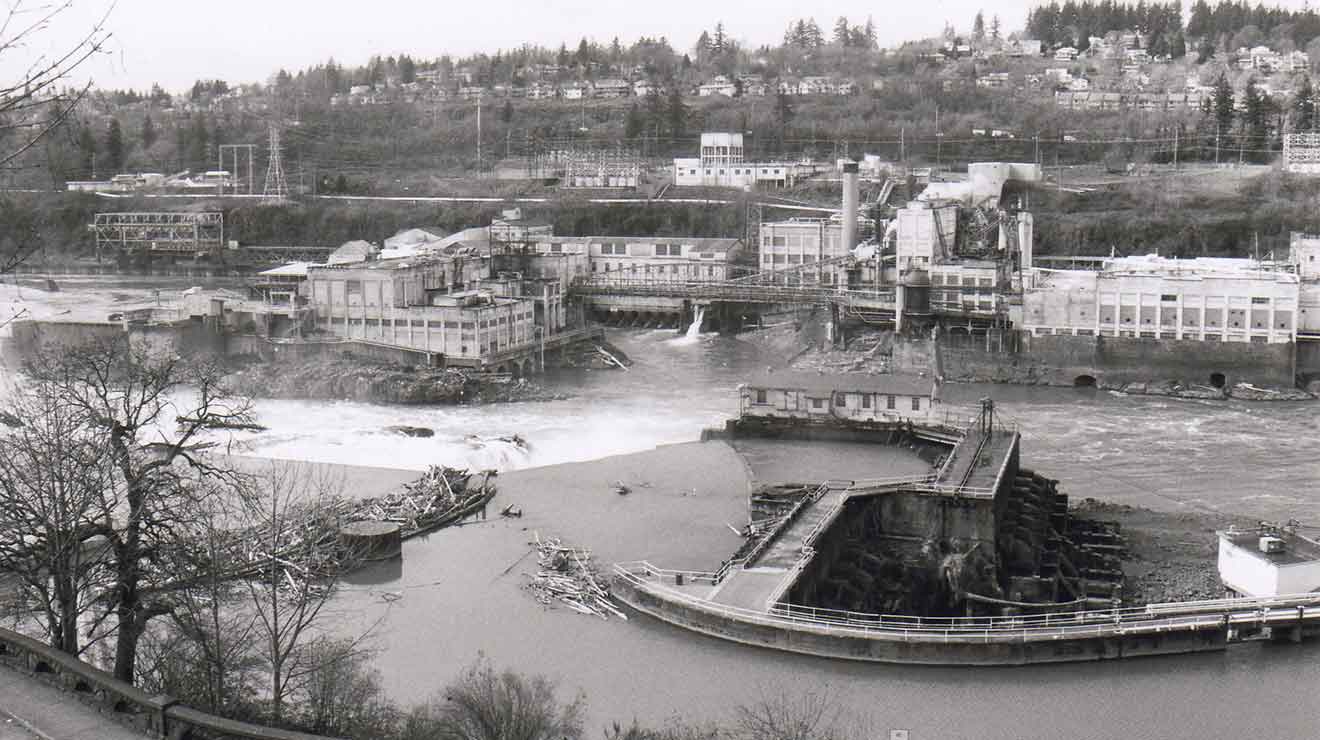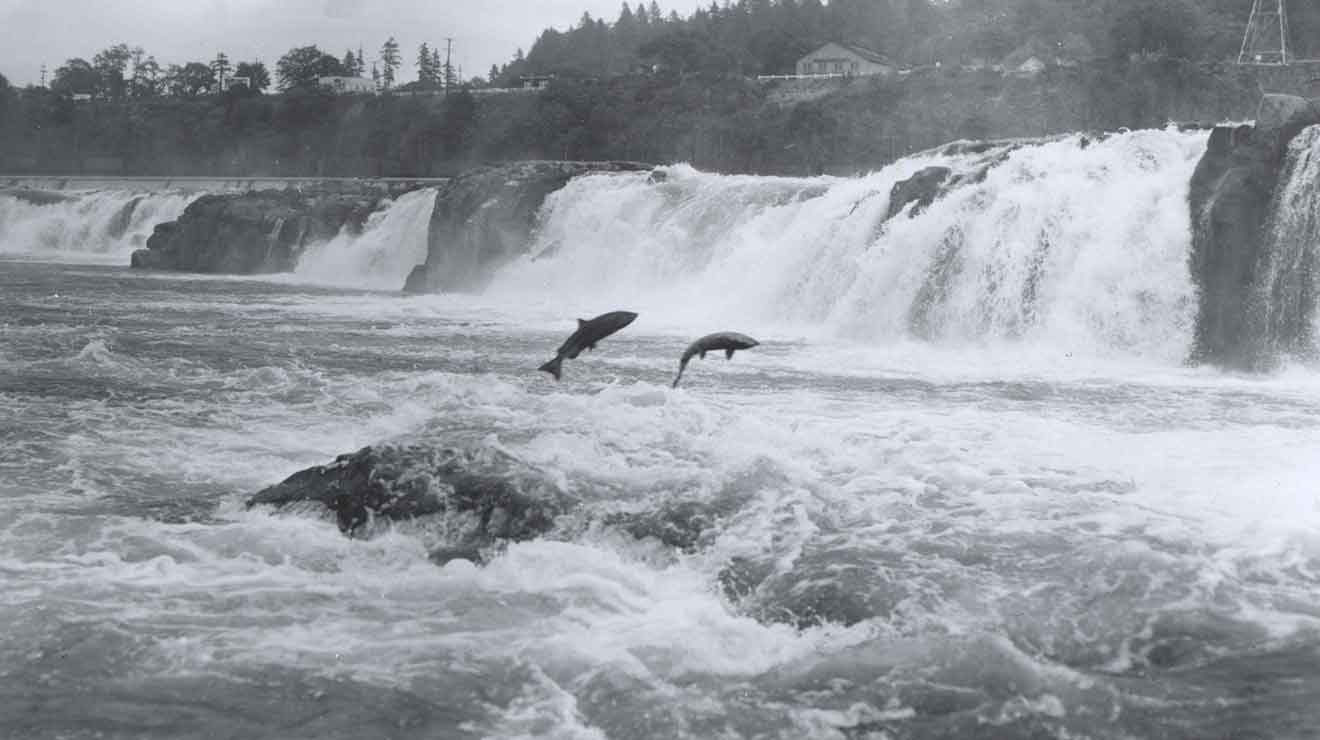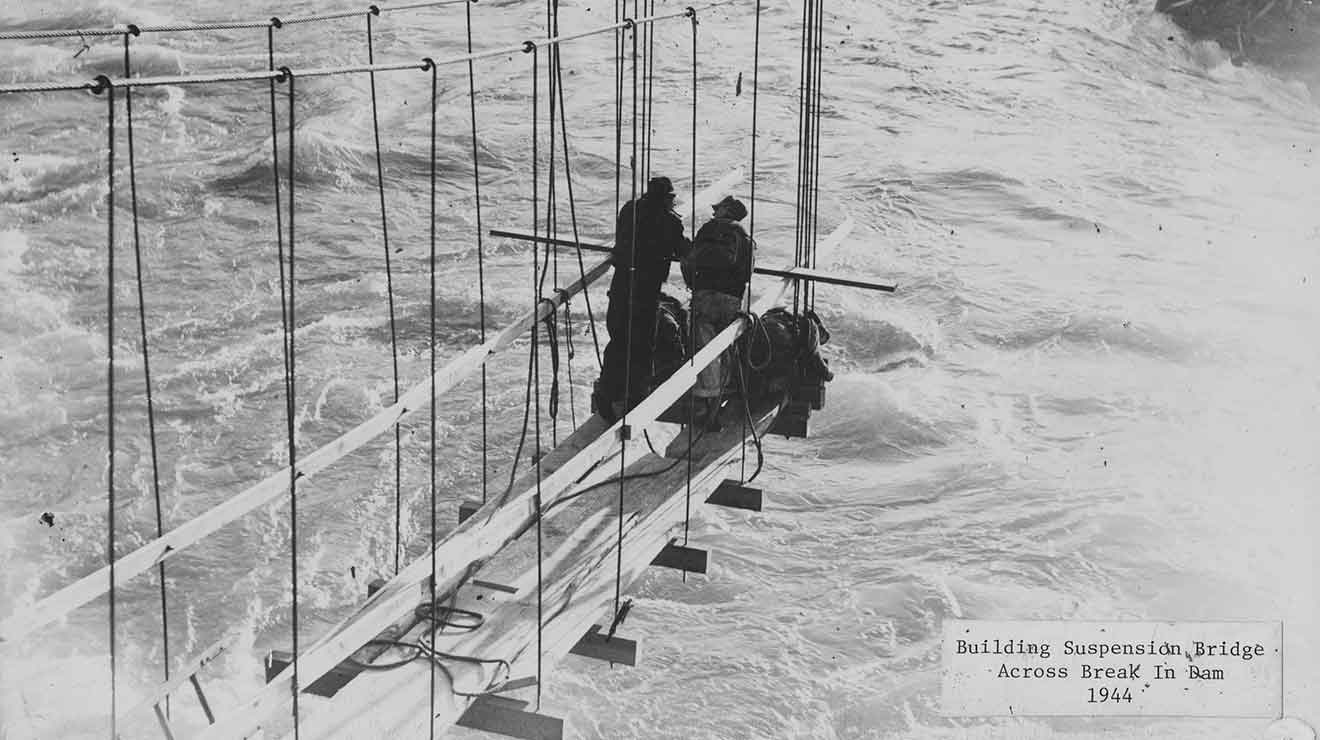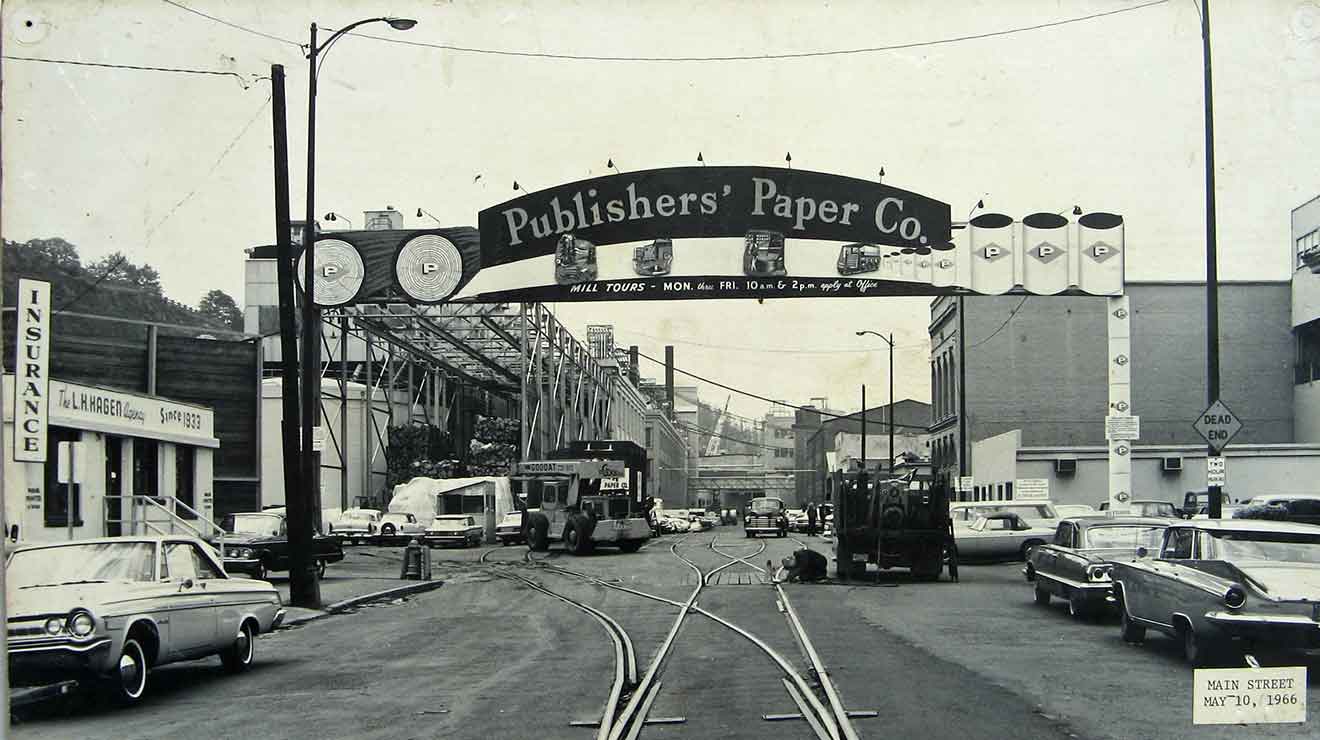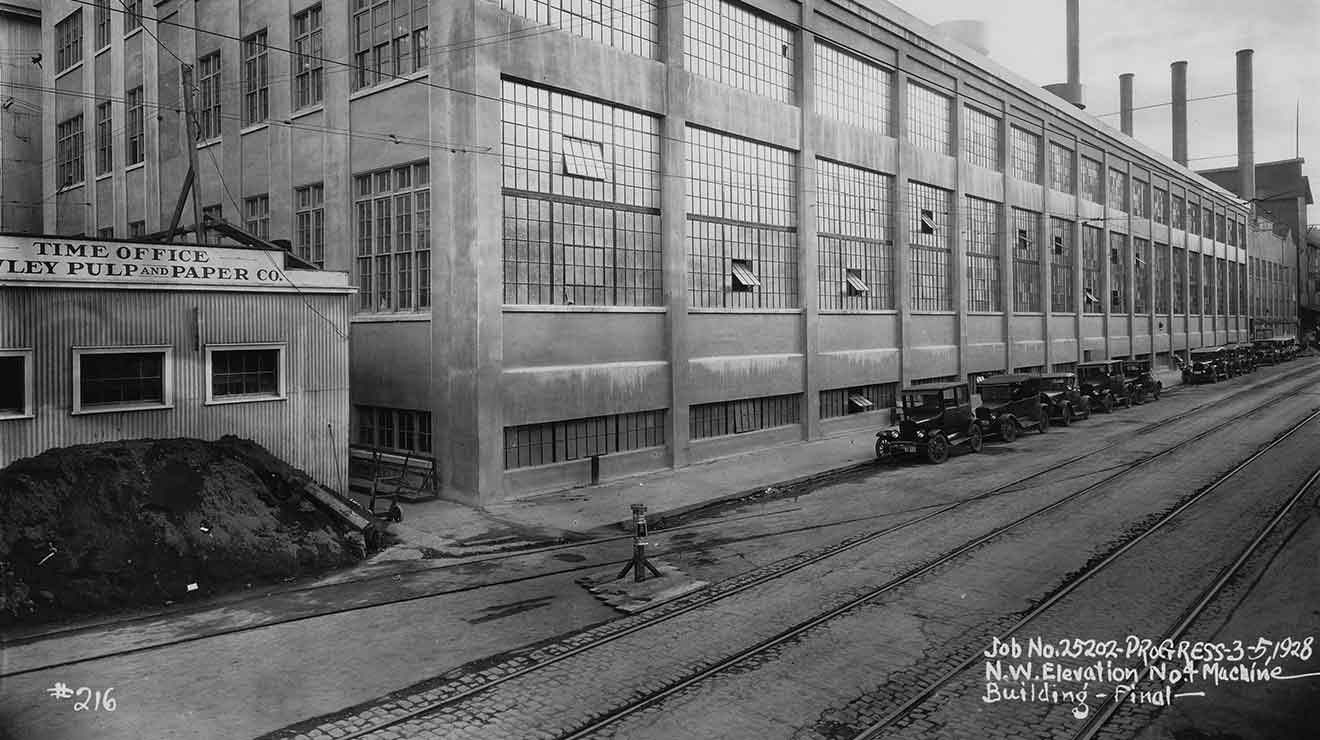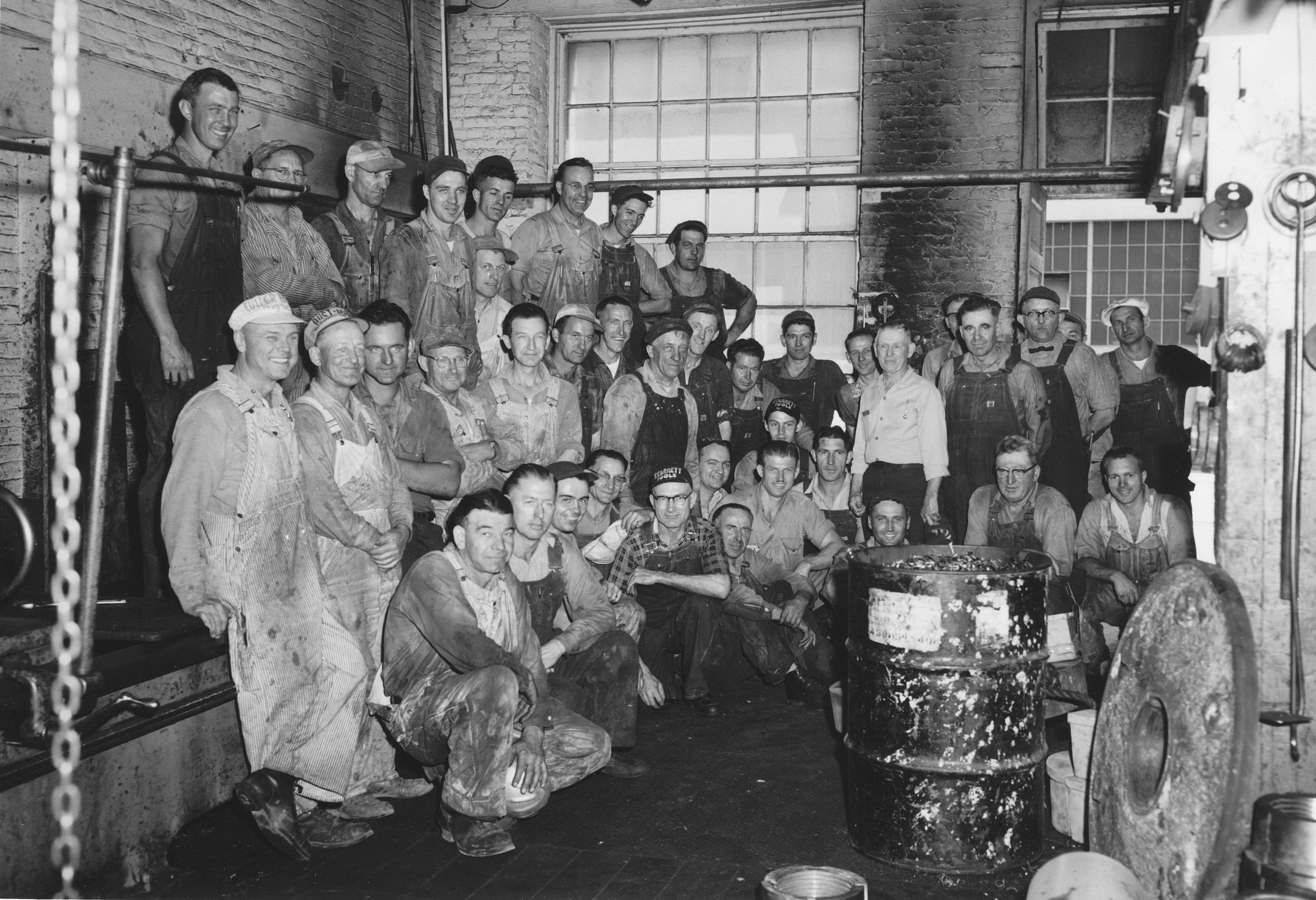For centuries, Willamette Falls has been a significant cultural, fishing and gathering place for Native American Tribes, including the Confederated Tribes of Grand Ronde, the Confederated Tribes of Warm Springs, the Confederated Tribes of the Umatilla Indian Reservation, the Confederated Tribes of Siletz Indians, and the Confederated Tribes and Bands of the Yakama Nation.
Although they didn’t see it themselves, explorers Lewis and Clark made many references to Willamette Falls and the tribe that lived there in the early 1800s.
Welcoming settlers at the end of the Oregon Trail, Willamette Falls was the final destination for many a westward-heading pioneer. Throughout the late 1800s, it was also the heart of thriving industries, providing energy to power lumber, flour, woolen and paper mills, and a brick-making operation. In 1889, it was the site of the world’s first long-distance electrical power transmission line, from Oregon City to Portland.
The Blue Heron Paper Company, which closed its doors in 2011, was the last of the mills to operate at the site in Oregon City near Willamette Falls. In 2014, private developer Falls Legacy LLC purchased the 22-acre Blue Heron site and granted the Willamette Falls Legacy Project an easement to build a public riverwalk on the site, alongside the Willamette River.
Willamette Falls – Where the Future Began, produced by Portland General Electric
See historic Sanborn Maps.

